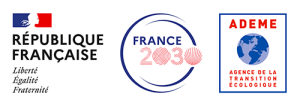The water crisis is already affecting thousands of people around the world. But concrete examples show that it is possible to act quickly and effectively, even under extreme conditions. Seawards, which is developing a cryo-separation desalination solution that offers solutions adapted to arid and isolated areas. These technologies respond to an urgent need to produce water locally, quickly and with minimum maintenance.
1. Jerada, Morocco: managing the shortage In Jerada, a Moroccan town facing a severe water crisis, rehabilitation of traditional water networks has failed. Local authorities are turning to autonomous, hybrid solutions capable of operating in isolated areas. These technologies are not there to test new ideas, but to respond to a real emergency: producing water locally, quickly, with minimum maintenance.
2. Guanacaste, Costa Rica: an autonomous model In the desert of Guanacaste, an autonomous plant has enabled a community of 200 inhabitants to revive local agricultural activities. Although the initial cost per liter of water is higher than usual, the benefits in terms of health, food self-sufficiency and children’s education are immediate. This model demonstrates that a higher initial cost can deliver a tangible return on societal investment.
3. Egypt: mobile micro-unit for water management In Egypt, a pilot project involves the installation of a mobile micro-unit in a rural commune, linked to the industrial zone. The aim is to create a flexible, replicable intervention model, co-piloted by local players. This project is not limited to a technical solution, but is part of a structured framework of local governance, guaranteeing its sustainability.
Concrete examples showing that it is possible to implement effective water solutions, adapted to emergency situations. The key is to act quickly and pragmatically, building replicable models that foster local autonomy. These projects demonstrate that resilience, simplicity and adaptability are the keys to responding to future global water crises.
